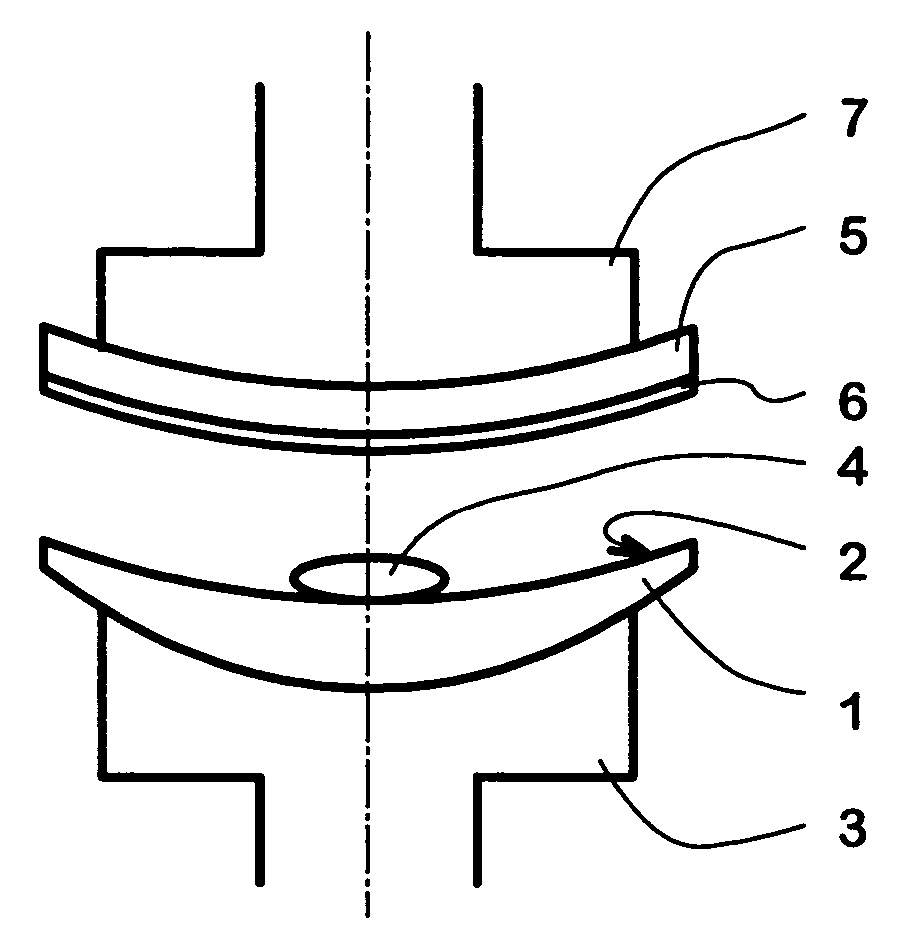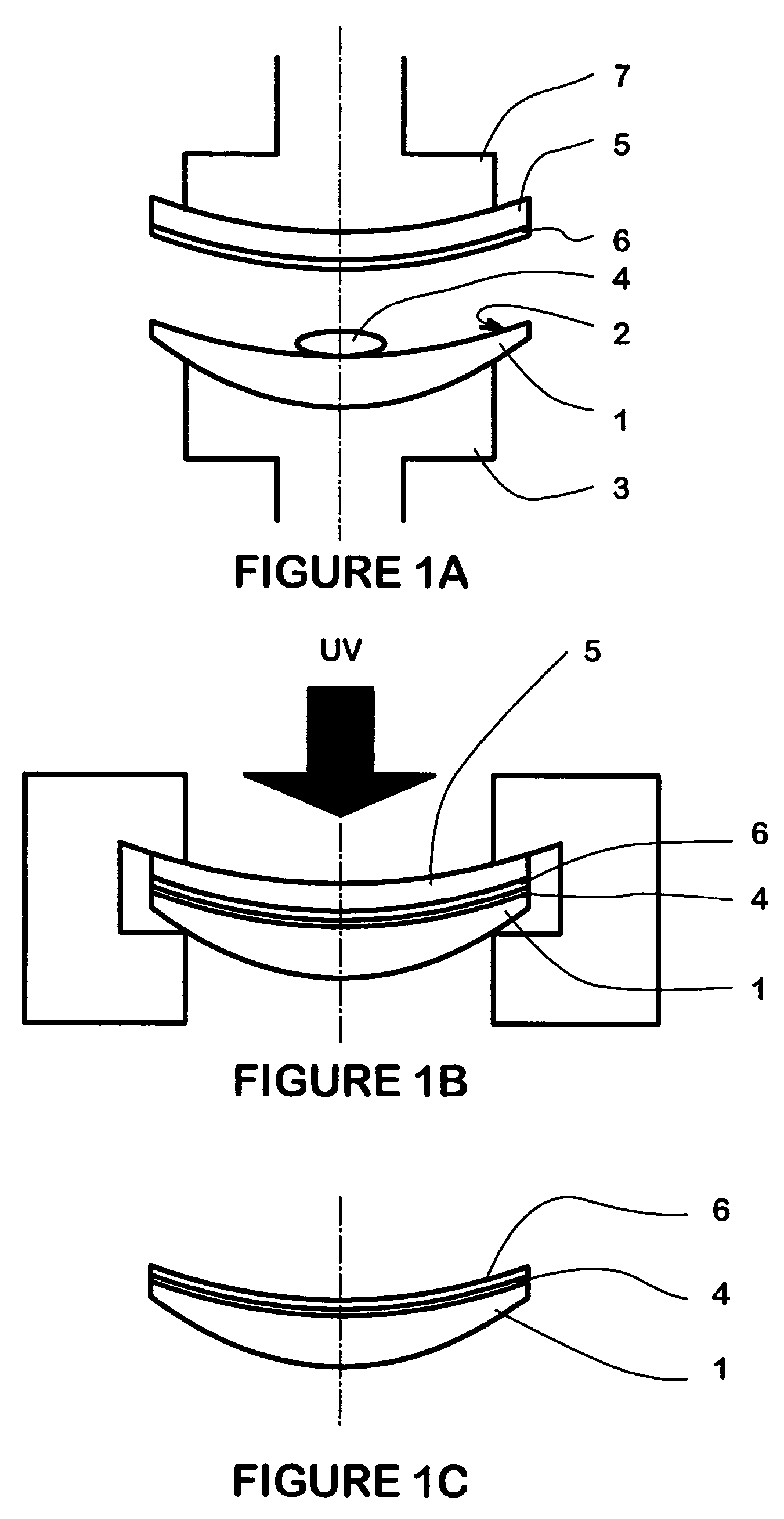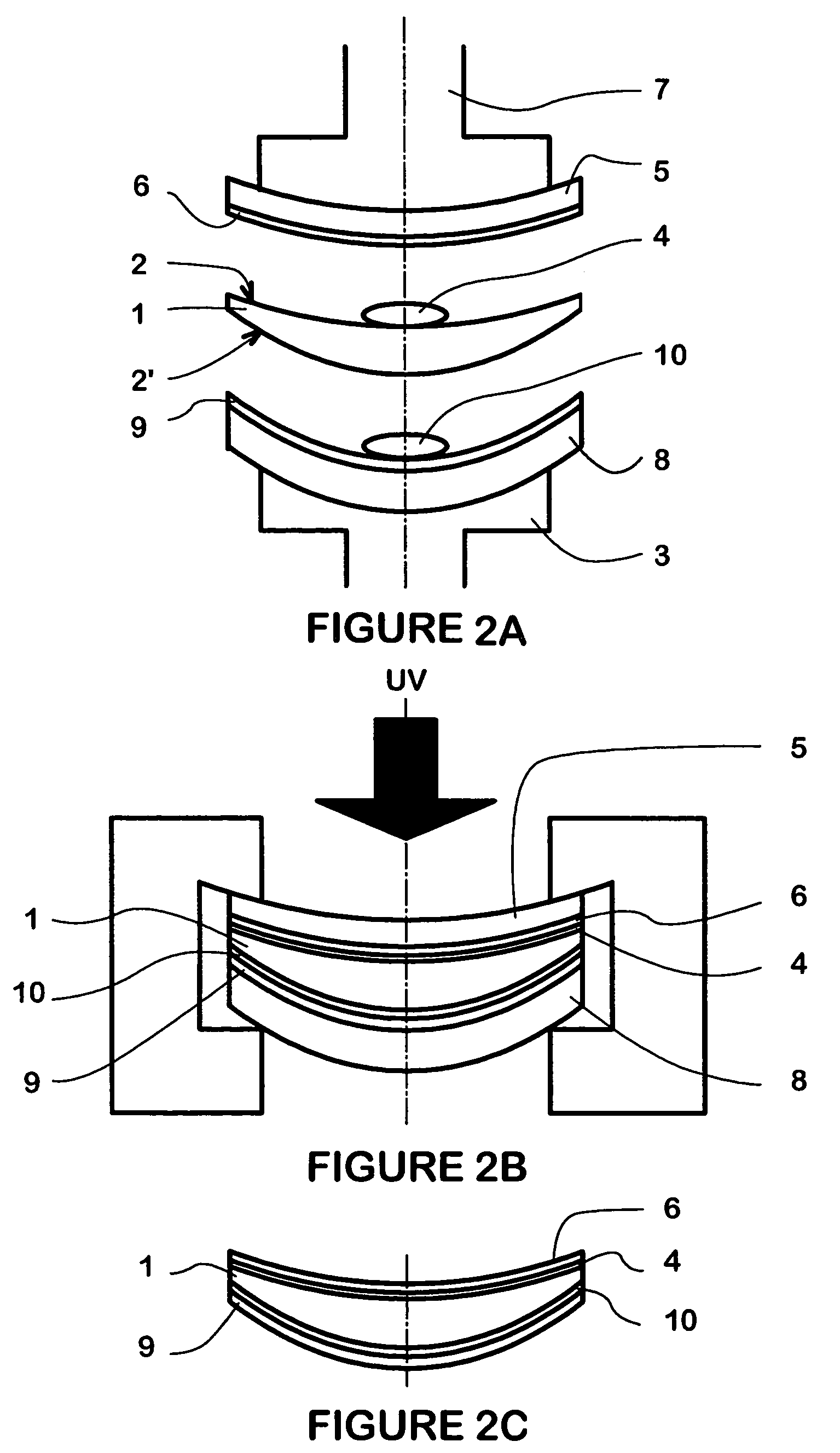Process for transferring a coating onto a surface of a lens blank
a technology of coating and lens blank, which is applied in the field of coating transfer process, can solve the problems of difficult manufacturing and handling of preforms less than 500 microns thick, and achieve the effects of no interference fringe, low interference fringe, and good optical quality
- Summary
- Abstract
- Description
- Claims
- Application Information
AI Technical Summary
Benefits of technology
Problems solved by technology
Method used
Image
Examples
example 1
[0136]The convex side with base curve 6 of a flexible mold part made of polycarbonate (PC) and having a thickness of 1 mm is pre-coated with HMC coating. Orma SF(1) lenses were surfaced on their back side to different curves of surface as indicated in Table I below. Then the HMC coating on the mold part was transferred to the surface back side of the lenses in the manner described in connection with FIGS. 1A to 1C. The glue used was a UV curable glue OP-21 from DYMAX Inc. After the curing, the mold part was removed from the lenses and the lenses were recovered with the coating stuck on their back sides. The finished coated lenses have very good optical properties and the transfer coatings show no cracks even though the coatings were deformed to a certain level during the transfer.
[0137](1) SF: Semi-finished
[0138]
TABLE ICoating PC moldOrma lens withCoatingpartdifferent back curveBLRBLrtransfer resultsSpheric CV 6 Base5 base with toric 0.955.9ExcellentSpheric CV 6 Base5 base with tori...
example 2
[0139]Example 1 was reproduced but using a soft silicone mold part instead of a PC mold part. The resulting final coated lenses exhibited very good optical properties and the coatings do not show any cracks even though the coatings were deformed to a certain level during the transfer.
[0140]The silicone mold part used was made from POR-A-MOLD 2030 of Synair Inc. The silicone monomer was filled into a glass mold and cured at room temperature for 24 hours to get a front 4 base curve carrier with thickness of 2.5 mm. The obtained silicon has 900% elongation and 28 of Shore A Hardness.
example 3
[0141]Orma SF lenses were ground to different levels on their back side with 6 base curves and coatings were transferred to the back side of the lenses as disclosed in example 1. After transfer of the coating, the finished coated lenses were checked by transmission T, Haze with Haze-Gard Plus (BYK Gardner) (compared to the sample before transfer of the coating). Then, the lens were checked again in Arc lamp to see if there was any grinding lines seen by the eye. Grinding process and results are given in Table II below:
[0142]
TABLE IIHMC film transferred onto grind surface of the lens (without polishing)RoughnessbeforetransferringtheRefractiveT %Hazecoating(s)index ofSeen in ArcLens typeGrind process type(before)(before)(Sq)glueT % (after)Haze (after)lampOrma ®V95 + fine w / 9090 0.4 μm1.505980.73Nothingstandard process(1)PCGemini913.50.03 μm1.505950.42NothingProcess(2)
[0143]Sq: Quadratic mean of the deviations from the mean
[0144]Sq=1NM∑x=1N∑y=1MZx,y2
[0145]Computes the efficient va...
PUM
| Property | Measurement | Unit |
|---|---|---|
| thickness | aaaaa | aaaaa |
| thickness | aaaaa | aaaaa |
| thickness | aaaaa | aaaaa |
Abstract
Description
Claims
Application Information
 Login to View More
Login to View More - R&D
- Intellectual Property
- Life Sciences
- Materials
- Tech Scout
- Unparalleled Data Quality
- Higher Quality Content
- 60% Fewer Hallucinations
Browse by: Latest US Patents, China's latest patents, Technical Efficacy Thesaurus, Application Domain, Technology Topic, Popular Technical Reports.
© 2025 PatSnap. All rights reserved.Legal|Privacy policy|Modern Slavery Act Transparency Statement|Sitemap|About US| Contact US: help@patsnap.com



